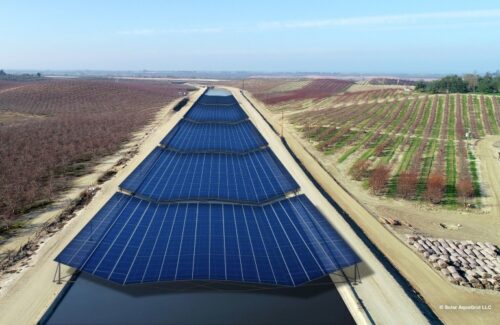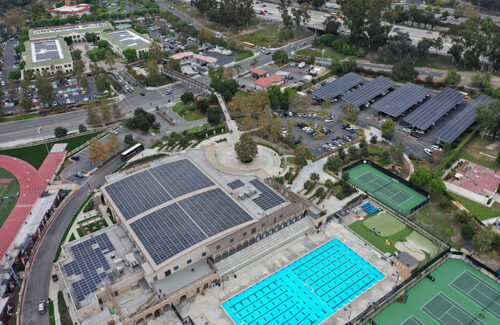State and federal agencies have recently embraced the economic and environmental benefits that come with siting solar power on government-owned property. The Dept. of the Interior (DOI) recently proposed new rules to responsibly boost renewable energy deployment on public lands, showing the federal government can be a leader in combating climate change and contributing to greening and growing the nation’s economy.
“Our public lands are playing a critical role in the clean energy transition,” said Tracy Stone-Manning, Bureau of Land Management director, a sentiment increasingly shaping the actions taken by our nation’s policymakers. But just as quickly as government leadership can start a green movement, inconsistent policies can slow progress already in motion.
Growth of solar on government land
Government support of locally sited solar has been growing quickly. Development on brownfields like landfills is becoming an increasingly common solution for municipalities. In 2021, local governments installed 207 MW of solar power on brownfields, a 10-fold increase on brownfield solar installed just one year previously. Local schools are also involved in the trend — about 8,400 American schools, many of them public, had solar in 2022, triple the collective solar capacity they’d had eight years before.

Municipalities are increasingly putting solar on underused land like capped landfills. Credit: CEP Renewables
Support is also strong at a federal level. The DOI’s new rules promote development on public lands by reducing project leasing fees by about 80%. The Bureau of Land Management has been re-evaluating the amount of public land available for utility-scale solar in the Southwest to accelerate clean energy growth. And the Dept. of Energy recently released clean energy performance standards that encourage federal buildings under construction to incorporate solar.
Selah Goodson Bell, energy justice campaigner for the Center for Biological Diversity, said that federal officials seem increasingly receptive to solar on government-owned land and that several agencies have provided direct funding and assistance for a variety of projects on municipal or Tribal-owned land.
For example, the Gila River Indian Community is partnering with the U.S. Army Corps of Engineers to build community solar systems over the area’s canals. The National Renewable Energy Laboratory (NREL) is supporting a floating solar array on a 10-acre reservoir in New York that will power municipal buildings in a town largely populated by low- and moderate-income (LMI) residents.
States, regardless of geography or politics, are starting to figure out how to support more solar deployment on public land too. Maine is moving forward with three projects along its interstates and near the Augusta State Airport. The projects will reduce the state’s electricity costs by over $7 million over 20 years.
“Once online, these arrays will help reduce costs for taxpayers and reduce emissions from state power consumption, in support of Gov. Mills’ direction for state government to lead by example in renewable energy and sustainability,” said Kirsten Figueroa, commissioner of the Maine Dept. of Administrative and Financial Services, in a press statement.
California recently floated a $20 million state-funded endeavor to cover irrigation canals with solar panels. The project is predicted to bring multiple economic and ecological benefits to stakeholders and communities, but recent policymaking within the state threatens to halt these mutually beneficial projects.
The curious case of California

A rendering of solar panels spanning the 110-ft-wide Turlock Irrigation District’s main canal as part of Project Nexus in California. Credit: Project Nexus
California has largely backed solar in all corners of the state. Late last year Gov. Newsom signed into law a provision that encourages solar deployment along the state’s highways, something heralded as a creative way of using available spaces and showcasing the potential of roadsides.
However, policy in the state has also been contradictory as of late, with disastrous effects.
Recent changes to net metering by the California Public Utilities Commission greatly undermines the economic value of schools and other government-owned properties going solar. Bernadette Del Chiaro, executive director of the California Solar & Storage Association, said rooftop solar is the most cost-effective way to deploy clean energy, as it doesn’t require additional transmission infrastructure. She said it’s confounding for the state to explore solar on government property like freeways and aqueducts while crushing the market for solar on the roof of a government building where the power can be used locally.
“I find it really off the mark to be putting so much emphasis on other, more difficult ways to build solar when we should be prioritizing shoring this market back up, getting it back on track before more companies go bankrupt,” Del Chiaro said. “Putting solar up on long highways is cool, but it is not the easiest or most cost-effective way to go solar and shouldn’t come ahead of installing it on roofs and over parking lots.”
The role of equity and ecosystem impact
California isn’t the only state experiencing difficulties with renewables policy and siting solar on government land. It can be a challenge to forward government investment in solar and energy storage on public land in a way that does not sacrifice local ecosystems or overlook environmental justice communities.
Bell explained that the Center for Biological Diversity presses state regulators “to identify and remedy the social inequities and ecological harm of the fossil fuel-dependent energy system” and cease their habit of “ignoring vulnerable communities, air and water pollution in deference to lopsided cost-benefit analyses that benefits polluting industries and for-profit utility companies.” He pointed to Florida, Indiana and Georgia as examples of states where investor-owned utilities have extensively lobbied to gut incentives for distributed solar.
However, some cities, municipalities and Tribes across the country are successfully deploying solar on government-owned land in ways that benefit nearby disadvantaged communities. Bell explained that state and federal stakeholders tend to serve as important sources of funding and technical assistance.
One of the Center’s main focuses, he said, is limiting government investment only to responsibly sited and well-planned renewable energy projects that protect the desert, public lands, wildlife and communities.
“[Ideal projects] are paired with storage and sited in or near the community, prioritize communities for which the community solar can displace fossil fuel generation and provide pathways to community ownership of the project,” Bell said.
Bell spotlighted four projects located on government-owned land or property that come close to meeting these criteria:
- A Brooklyn-based community solar project across 40 NYC Housing Authority buildings that provided workforce training to residents, the option to own the project and guaranteed utility bill savings to about 500 LMI households.
- A microgrid of solar + storage systems for an East Salinas, California, school district that provided workforce training to residents, offset school energy costs and serves as a community resiliency center.
- A Denver community solar program on municipal properties that included paid workforce training and 20% of subscriptions set aside for LMI residents.
- A Washington, D.C., community brownfield solar project owned by the city that offsets up to $500 annually per household for 750 LMI households and includes landscaping to restore native flora and fauna.
Bell also highlighted one of the few model projects that fully meets the above criteria — a Tribal-owned solar + storage system in Alaska. The system displaces fossil-fuel generation and uses energy democracy to maximize the financial and climate resiliency benefits of distributed solar and storage in a disadvantaged community. It renders the community more resilient to power outages and reduces its reliance on diesel generators, thus improving local air quality.
Additionally, the system generates excess funds by selling the array’s electricity to a nearby isolated microgrid and repurposes that money to offset households’ energy bills with energy-efficient home upgrades.
“Ultimately, it empowers the Tribal community to envision and actualize its own energy future and serves as a model for the development of more Tribal, independent power producers throughout the Northwest Arctic Borough,” Bell said.
Looking to the future
Solar and storage in government-owned spaces hold considerable potential, offering an almost unlimited variety of deployment opportunities. The majority of our nation’s waterways and reservoirs, brownfields, roadsides, government facilities and schools remain untapped.
Bell pointed to energy democracy models that can be explored further like co-ops, community choice aggregators, consumer-owned utility boards and Tribal ownership. However, CALSSA’s Del Chiaro stated that the lessons of California are relevant across the country: The nature of government engagement and leadership can either make or break our country’s efforts to combat climate change.






Very insightful article Sara. I was begging to start installing on brownfields in the Missouri area back in 2014 and every one laughed at me and i kept exploring it (and there are a lot of things to think about like soil settlement on landfills etc) but it can be done … but i finally just gave up. Glad to see some people are seeing the light. Now if we could just get California to take its head out of its ass.